I have the following undirected graph
gr={1->2,1->3,1->6,1->7,2->4,3->4,4->5,5->6,5->7};
which I wish to plot with GraphPlot in a 'diamond' format. I do this as outlined below (Method 1) giving the following:

The problem is that this representation is deceptive, as there is no edge between vertices 4 & 1, or 1 & 5 (the edge is from 4 to 5). I wish to change the route of edge {4,5} to get something like the following:

I do this by including another edge, {5,4}, and I can now use MultiedgeStyle to 'move' the offending edge, and I then get rid of the added edge by defining an EdgeRenderingFunction, thus not showing the offending line. (Method 2,'Workaround'). This is awkward, to say the least. Is there a better way? (This is my first question!)
Method 1
gr={1->2,1->3,1->6,1->7,2->4,3->4,4->5,5->6,5->7};
vcr={1-> {2,0},2-> {1,1},3-> {1,-1},4-> {0,0},5-> {4,0},6-> {3,1},7-> {3,-1}};
GraphPlot[gr,VertexLabeling-> True,
DirectedEdges-> False,
VertexCoordinateRules-> vcr,
ImageSize-> 250]
Method 2 (workaround)
erf= (If[MemberQ[{{5,4}},#2],
{ },
{Blue,Line[#1]}
]&);
gp[1] =
GraphPlot[
Join[{5->4},gr],
VertexLabeling->True,
DirectedEdges->False,
VertexCoordinateRules->vcr,
EdgeRenderingFunction->erf,
MultiedgeStyle->.8,
ImageSize->250
]
